'Too hot to think': Rising heat leaves Singapore students cranky and distracted
Several studies found that rising temperatures reduce educational outcomes and children's cognitive ability. To deal with this heat, students and schools are doing what they can to stay chill.
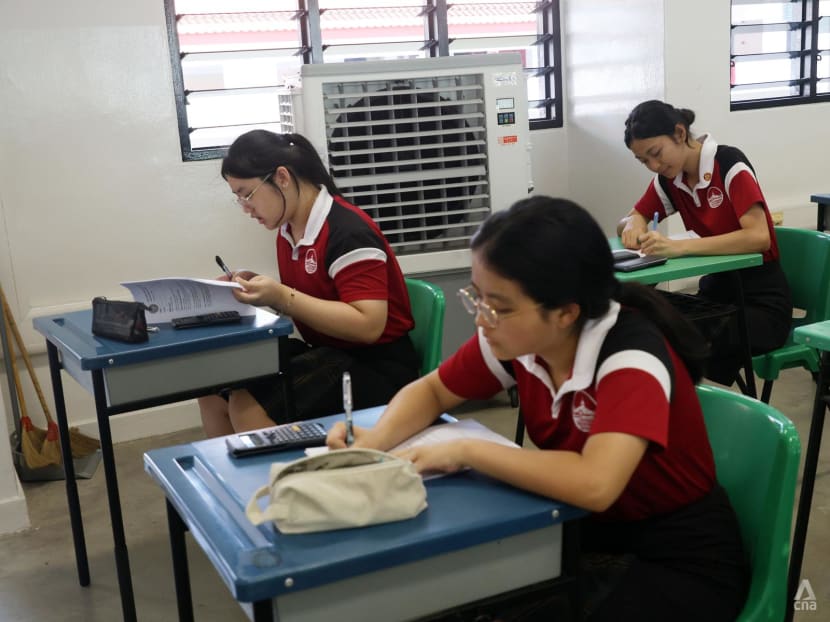
An air cooler in a classroom at Northland Secondary School pictured on May 28, 2025. (Photo: CNA/Ooi Boon Keong)

This audio is generated by an AI tool.
With temperatures soaring during Singapore's hottest months of May and June, 43-year-old Clement Tan is concerned about how the heat is affecting his children in school.
“Their school is in an older building and I’ve been there for meet-the-parents sessions. The fans do not provide ventilation throughout the whole classroom and it can be really uncomfortable at certain parts of the classroom,” Mr Tan, a litigation lawyer, said. He has three children aged 10, seven and five.
He has equipped his two older children, who study at Fairfield Methodist School (Primary), with handheld fans to give them some reprieve from the weather. The school has also allowed students to wear their physical education (PE) attire throughout the day, which has helped keep them cool and complaint-free.
However, since Mr Tan's children have eczema – a condition that causes the skin to become dry, itchy and bumpy and is exacerbated by heat – rising temperatures have caused flare-ups.
Several parents told CNA TODAY they were worried about how the stifling heat in school, during the commute as well as at home is affecting their children’s learning abilities.
These parents' concerns are not unfounded. Some education and environmental experts said extreme heat conditions could affect students, with several studies showing that they scored lower grades and were unable to focus as the temperature rises.
Singapore has experienced six historical heatwave events, with the most recent one in 2016. Heatwaves are when the highest daily temperature is at least 35°C for three consecutive days and the average temperature every day is at least 29°C.
In May 2023, the highest daily maximum temperature of 37°C was recorded, tying with that recorded in 1983.
May has always been one of Singapore's hottest months. This year, from May 23 to 28, the highest daily temperatures ranged between 35°C and 36.2°C around the island.
With the effects of climate change, including rising average temperatures and heavier rainfall, experts predicted that more students would likely fall ill and miss school.
Calling for more air-conditioned classrooms may seem like the most obvious recourse, but the experts also said that turning on the air-conditioner too often could affect the body's heat tolerance and ability to handle rising temperatures in the longer term.
In preparation for future rising temperatures, the Mercury Taskforce was set up in 2023 to create a national heatwave response plan. It is led by the Ministry of Sustainability and the Environment as well as the National Environment Agency.
Should a heatwave occur, students will be allowed to wear dress-down attire such as uniforms made of dry-fit material. Outdoor activities will also be minimised between 11am and 4pm, or suspended if heat stress levels spike, the task force proposed.
And should there be a need for heightened measures, schools may switch to either partial or full home-based learning.
The Ministry of Education (MOE) said that it refers to studies here and overseas with regard to thermal comfort and that schools have guidelines from the ministry as well as the autonomy to determine what sort of measures would help students to manage the heat.
Besides adopting the heatwave response plan by the task force, of which MOE is also a member, the ministry has also taken measures to improve the ventilation of classrooms.
“New schools are also designed to facilitate natural cross-ventilation through the use of computer simulations on air flow and wind velocity," it added.
“MOE is also progressively adopting additional measures to enhance thermal comfort in classrooms, such as adding more fans and changing them to energy-efficient direct current models, and painting the school building exteriors with cool paint."
STUDENTS ARE GRUMPIER, MORE IRRITABLE
Despite these moves, Ms Rynette Joyce Tan’s children have been “more cranky than usual” as the highest daily temperatures hit 36.2°C in the latter half of May.
"They complain as they get itchy and irritable from feeling too warm. They get agitated more easily and tend not to speak too nicely to each other," she said.
The founder of childbirth education platform 13Thirteen is the mother to four children aged 11, 10, seven and five.
“Our kids usually take the public bus to school on their own but lately, they’ve been asking us to pick them up more often,” Ms Tan added.
“Sometimes, they’ll even catch a ride with a friend’s parent if they can. I think they’re drained from the heat by the end of the school day.”
Her children's school has switched the material used for its school uniform to a lighter, moisture-wicking fabric. This has helped to make the heat more bearable, Ms Tan said.
At home, the family has made provisions to keep the children cool.
“We don’t usually use the air-conditioner during the day but with this heat, we’ve told the kids it’s okay to switch it on, especially when they’re studying for exams and need to concentrate.”
HOW RISING TEMPERATURES AFFECT STUDENTS AROUND THE WORLD
Singapore has not halted schools due to heatwaves and rising temperatures.
Elsewhere, though, one in seven students had their school disrupted due to climate hazards last year, an analysis by the United Nations Children's Fund (UNICEF) found.
The study, released in January 2025, also found that heatwaves were the most significant climate hazard to disrupt schooling, affecting roughly 171 million students in 2024.
The month of April last year had the highest global climate-related school disruptions as heatwaves affected 118 million children in South Asia and Southeast Asia.
Some schools were shuttered entirely for several days, such as in the Philippines, when temperatures soared above 40°C. They were also closed in the later part of the year as typhoon season flooded classrooms, or schools were used as temporary evacuation centres.
Over in Cambodia, schools tried to help students escape the sweltering heat by shortening the school day by two hours.
In Latin America, 48 million children faced double the number of days when temperatures reached 35°C or higher compared with 60 years ago, UNICEF said in its study.
North America is also not free from the effects of rising temperatures. Last year, several schools closed their doors as inadequate air-conditioning systems failed to keep classrooms cool, British news outlet BBC reported.
Assistant Prof Wang Jingyu from the National Institution of Education at Singapore's Nanyang Technological University said that students here experience milder climate impact compared with developing neighbours in Southeast Asia because the island has advanced infrastructure and policies.
However, Singapore goes through similar challenges that developed countries such as Australia and the United States do.
These include urban heat stress, exposure to extreme weather events, air quality issues and the need for resilient infrastructure so that classes in school can continue uninterrupted.
"Despite differing climates, developed countries often face similar pressures in adapting their urban systems and educational environments to increasing climate variability and extremes," Asst Prof Wang said.
Former teachers told CNA TODAY that they noticed students were more distracted when it was hot. Mr Eric Kua, a former higher-level chemistry teacher, said that it was exceptionally bad while doing science experiments involving heating, because they had to turn off the fans in the laboratory.
The founder of tuition centre Mr Khemistry taught at Meridian Junior College from 2006 to 2011, as well as from 2014 to 2017. The school is now known as Tampines Meridian Junior College.
Mr Kua recalled that students would be talking among themselves, fanning themselves with worksheets, moving around in their seats or wiping their arms and necks.
“It's hard to expect them to focus deeply when they're uncomfortable. The heat really does make it hard to think clearly.”
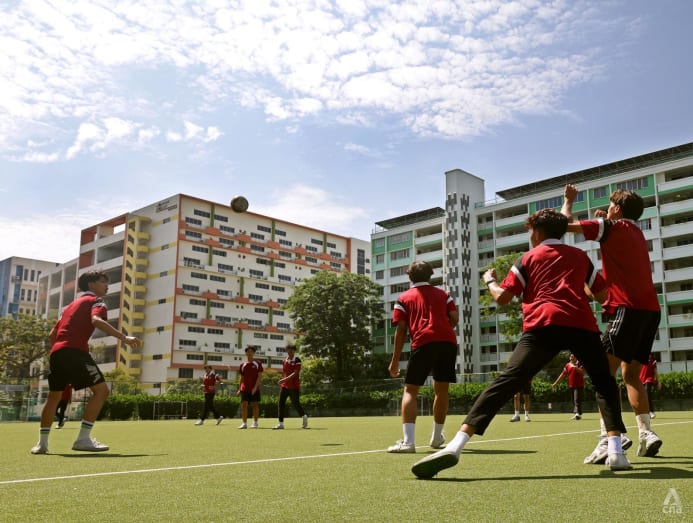
Mr Tan, the litigation lawyer and father of three, said that his two older children play tennis competitively.
“I have to thank the coach and teachers for always reminding them to hydrate and reapply their sunblock to protect themselves.”
He encourages his children to take a cool shower once they are at home, as well as to drink plenty of water and sit under a fan. The air-conditioner is turned on only when the humidity and heat are “too stifling”.
To beat the heat, the family also regularly consumes barley water, which Mr Tan’s in-laws diligently make every weekend to ensure the children are hydrated.
As for 52-year-old Edwin Lee, he is more concerned about the long-term impact of the fluctuating extremes in weather. The service controller is the father of an 18-year-old son and a 14-year-old daughter.
Unlike the parents of younger children in primary school, he said his children are “old enough to know how to care for themselves” when it gets too hot.
“With the weather getting increasingly unpredictable, one moment (there is) a heatwave, the next, a sudden downpour and flooding. I do think schools might want to start thinking ahead,” he added.
HOTTER DAYS AFFECT ACADEMIC OUTCOMES
Several studies have found that heat affects educational outcomes and cognitive abilities.
Associate Professor Alberto Salvo, who is dean’s chair of the Department of Economics at the National University of Singapore (NUS), is part of a team of academics studying how heat affects college students in Singapore.
Looking at undergraduate course records between 2005 and 2019 at one of Singapore’s universities, his team's paper – titled "Heat impacts college student grades even in rich Singapore" – revealed that students' performance was reduced by 1.5 per cent when semesters were hotter than usual.
Assoc Prof Salvo said the study did not find any "robust" evidence that students from low-income backgrounds, such as those living in rental flats, were more sensitive to the heat. However, this could be because such students found ways to mitigate the heat by going to libraries or malls with air-conditioning, for example.
Although his study focused on university-going students, he told CNA TODAY that it could be worthwhile for MOE to see if this trend stands among younger students.
Agreeing, Assistant Prof Wang Jingyu from the National Institution of Education (NIE) at Nanyang Technological University (NTU) said several studies have shown that students' cognitive performance scores dropped significantly with higher temperature and lower air velocity.
“Prolonged heat exposure in non-air-conditioned classrooms may increase fatigue and decrease participation,” he added.
The question is not so much about children being particularly susceptible to heat but whether they know how to mitigate it.
Experts from the Heat Resilience and Performance Centre at NUS's Yong Loo Lin School of Medicine said that children may be less aware of their own thermal discomfort and less likely to communicate symptoms of dehydration or overheating.
Associate Professor Jason Lee and Ms Lydia Law, the centre’s director and co-director respectively, said in a joint reply that this could put children at higher risk during both indoor and outdoor activities.
Warmer nights might also lead to sleep disruptions, reducing attention span and focus.

In general, children have physiological characteristics that help with heat loss under moderate conditions, the experts said.
While their smaller bodies lose heat more quickly and they also perspire less than adults, Assoc Prof Lee and Ms Law said the latter may not be a disadvantage in Singapore’s humid environment.
Dr Ho Boon Tiong, principal consultant educationist at training and consulting firm ClassPoint Consulting, said that some children might be more sensitive to the heat, including those with skin conditions such as eczema.
The heat could widen inequality among some students, he added. For example, students who do not have air-conditioning at home may not be able to study well at home when it is hot, unlike their peers who have access to cooler rooms.
“It’s a known fact that better resources will lead to better outcomes and learning environments are affected by temperature.”
This also applies to schools that may have better resources, such as those that have air-conditioned classrooms.
Asst Prof Wang from NIE said teachers would also face increased physical strain and diminished teaching effectiveness in a warming climate.
“In non-air-conditioned classrooms, high temperatures sap energy and focus, compromising lesson delivery, while frequent shifts between home-based and in-person learning demand extra preparation time,” he added.
“Beyond logistical burdens, teachers also bear the emotional toll of supporting vulnerable students – particularly those without adequate cooling or study spaces at home – further compounding stress and burnout risks.”
Singapore Management University (SMU) Professor Winston Chow warned that extreme weather and heat can also lead to negative after-effects in the community.
This includes a rise in vector-borne diseases such as dengue, since Singapore’s hot and wet climate accelerates the physical maturation of the mosquitoes, which could increase school absenteeism.
The professor, who studies urban climate, also said that mental health conditions could be worsened by the heat. There could be more climate anxiety, which is a sense of panic, worry and fear towards the consequences and uncertainty brought by climate change.
WHAT CAN BE DONE?
Responding to CNA TODAY's queries, MOE said it recognised the importance of providing conducive learning and examination environments for students in schools, while "striving for our schools to be environmentally sustainable in their operations".
It added that standard classrooms are designed to be naturally ventilated without using air-conditioning, such as placing classrooms in the north-south orientation to minimise heat gain and optimising natural cross-ventilation through sunshades, fans and ample window openings.
In more severe heat situations, MOE, with reference to national advisories, may suspend outdoor activities or all physical activities. Where necessary, it will also provide schools with more guidance.
Is the solution a simple matter of installing air conditioners in classrooms? The short answer is no.
Mr Kamal Seth, climate and sustainability director at the World Wide Fund for Nature Singapore, said: “Air-conditioners offer short-term relief but come with long-term trade-offs.
"Cooling accounts for roughly 30 per cent of Singapore’s electricity consumption, with related emissions projected to rise by 39 per cent by 2030 without clean cooling measures.
“Relying solely on air conditioners would create a vicious circle, intensifying the very heat crisis we’re trying to escape."
Ms Law and Assoc Prof Lee from the Heat Resilience and Performance Centre said that children may become less heat-resilient due to excessive time spent indoors.
"Individual resilience can be promoted by encouraging students to progressively and safely acclimatise to warm environments instead of avoiding outdoor activity altogether,” they said.
They also said that regular physical activity and gradual exposure can improve the body’s ability to cope with heat stress.
To enhance the effectiveness of existing measures such as allowing students to wear cooler clothes, Prof Chow from SMU suggested that weather predictions should be made more accessible to schools.
This would allow school leaders to anticipate and better handle extreme weather conditions ahead of time.
Teachers also play a role in ensuring students are not too affected by the heat by reminding them to hydrate and observe for signs of heat stress.
Asst Prof Wang said that teachers should be equipped with “climate-adaptive instruction” by modifying curriculum or classroom management in response to weather and climate-related disruptions such as extreme heat, haze or urban floods.
For example, outdoor physical activities can be replaced with heat-resilient alternatives such as swimming or indoor sports.
“Parents and communities play a key role by preparing cool, quiet study spaces at home, educating children on safety practices, and partnering with schools to identify and support at-risk students,” he advised.
Although switching to home-based learning and limiting PE classes may be necessary in extreme heat conditions to "maintain academic continuity", these may present “nuanced education trade-offs", he added.
For instance, reduced outdoor activities may affect physical development and social interaction.
“Home-based learning effectiveness hinges on equitable access to technology and home cooling, potentially exacerbating learning disparities.”
On this note of thermal inequality, SG Climate Rally – a group that advocates for climate justice – said that air-conditioned cooling centres should be provided, with space for students to attend their classes and do their homework such as in libraries or community centres.
“While ensuring equitable access to air-conditioning during high heat events is a must, we also need to prevent overuse of it when not necessary, such as setting the thermostat higher and switching to more efficient models.”
In response to CNA TODAY's question about closing schools in the event of extreme heat conditions, MOE said that "any decision to close schools will not be taken lightly as we are mindful of the disruptions to families' care arrangements for their child".
“In the event a school closure is necessary due to a severe hot weather situation, MOE may implement partial or full home-based learning in schools to safeguard the safety and well-being of all staff and students while ensuring the continuity of teaching and learning."
It added: “Schools and school-based student care centres will continue to support parents who may require alternative arrangements.”
RETHINKING SCHOOL INFRASTRUCTURE
As for infrastructure changes, certain design choices can make newly built schools cooler.
Ms Elaine Tan, the Singapore sustainability leader at global sustainable development consultancy Arup, said: “Where and how the building sits on the site plays a huge role.
"For instance, minimising east- and west-facing facades helps reduce exposure to intense morning and afternoon sun, while aligning buildings with prevailing wind directions makes the most of natural ventilation.
“The choice of window systems such as jalousie, side-hung or sliding windows, and its location and height, significantly influence wind movement and indoor comfort.”
Jalousie windows, also known as louvred windows, have multiple horizontal slats or panes of glass that can be opened and closed simultaneously to control airflow, and they are a common feature in Singapore's schools.
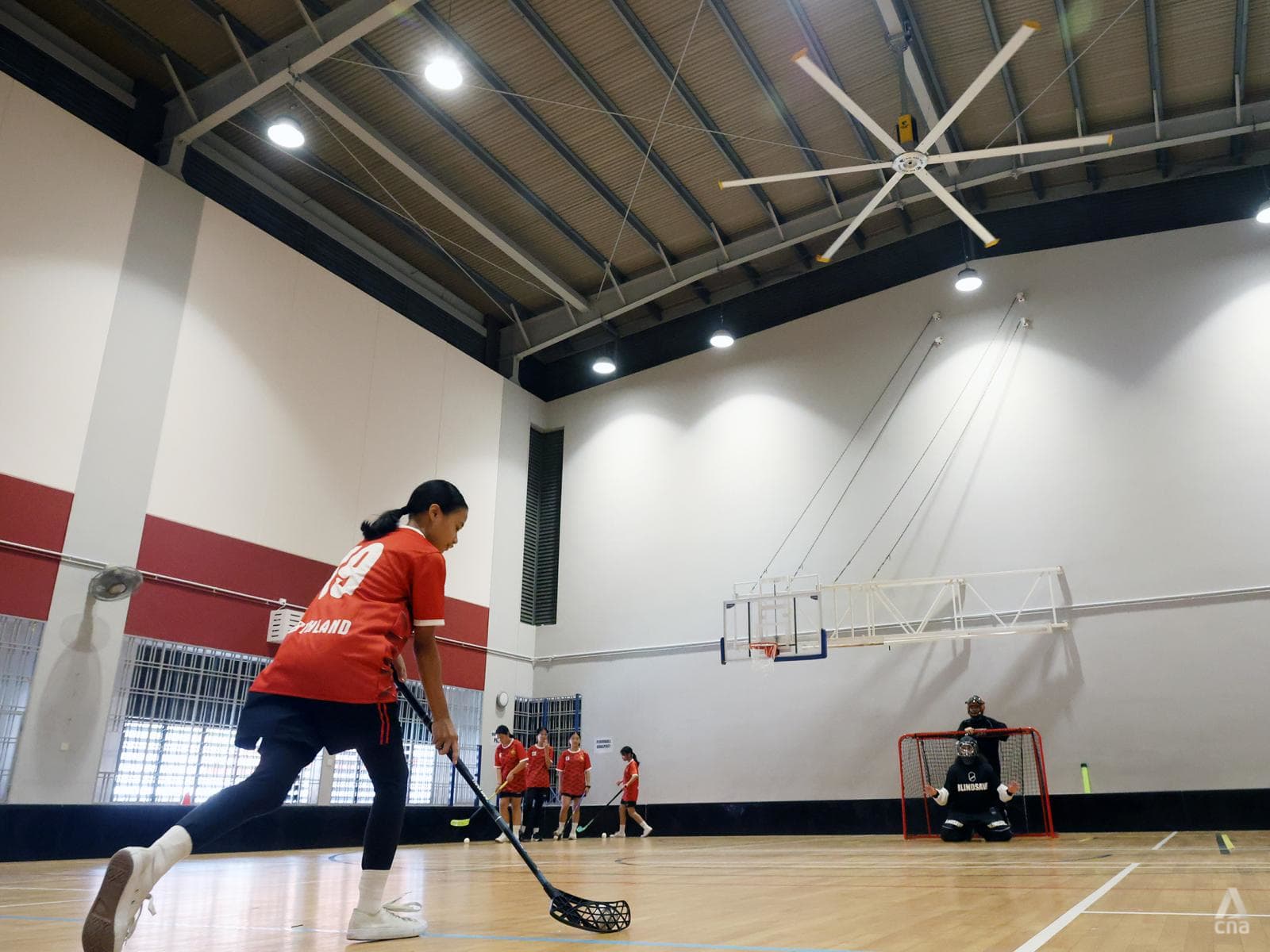
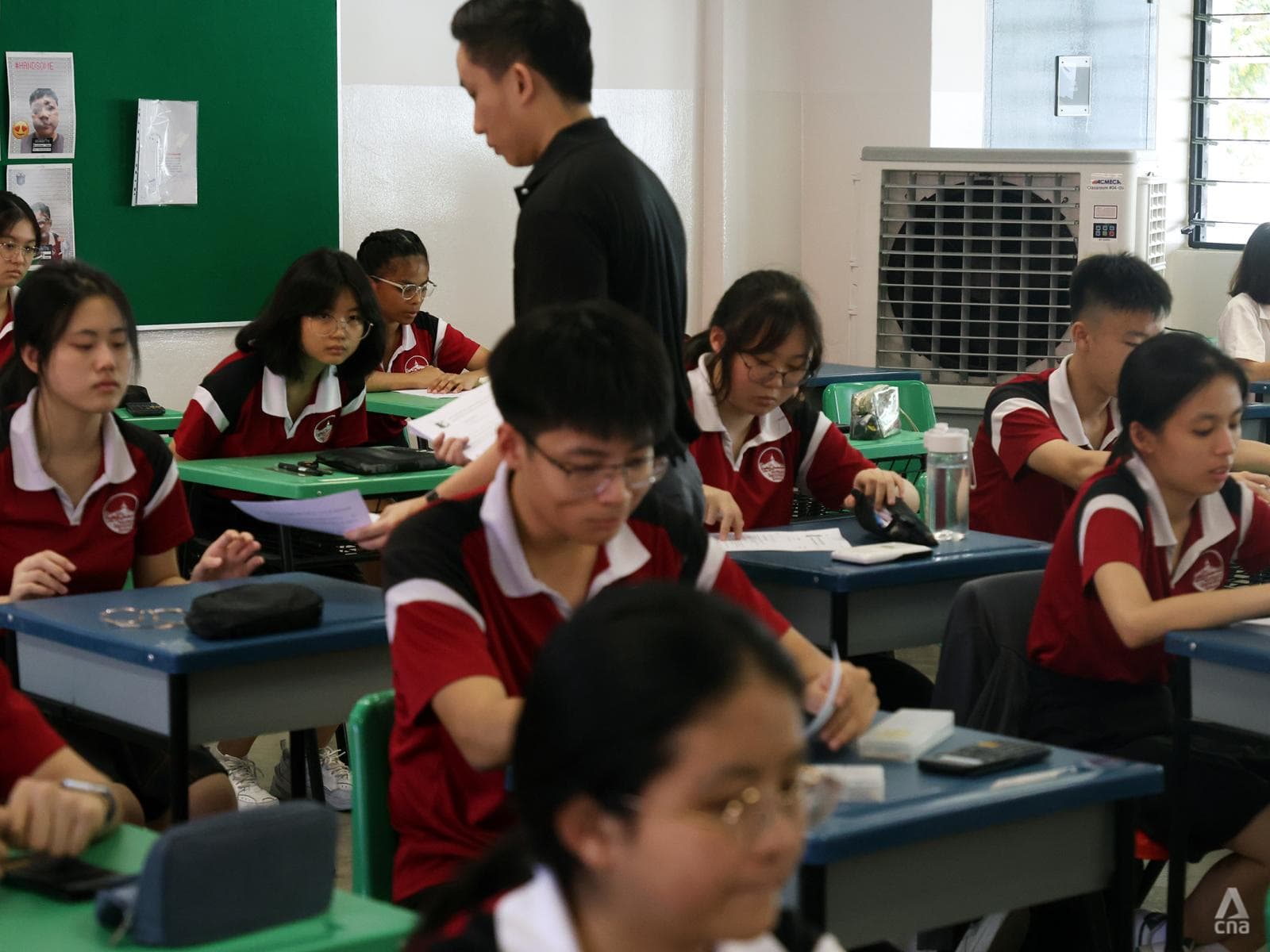
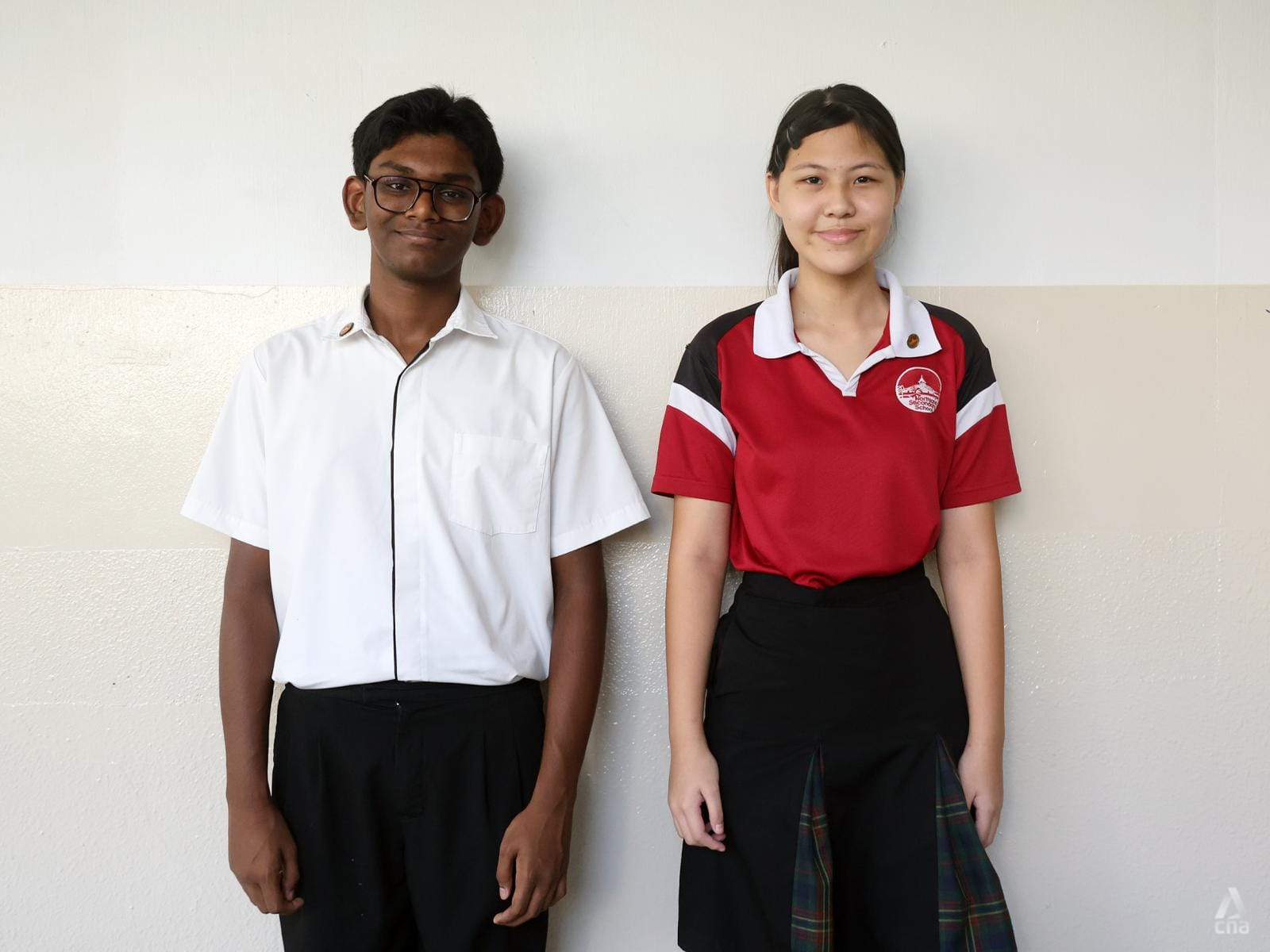
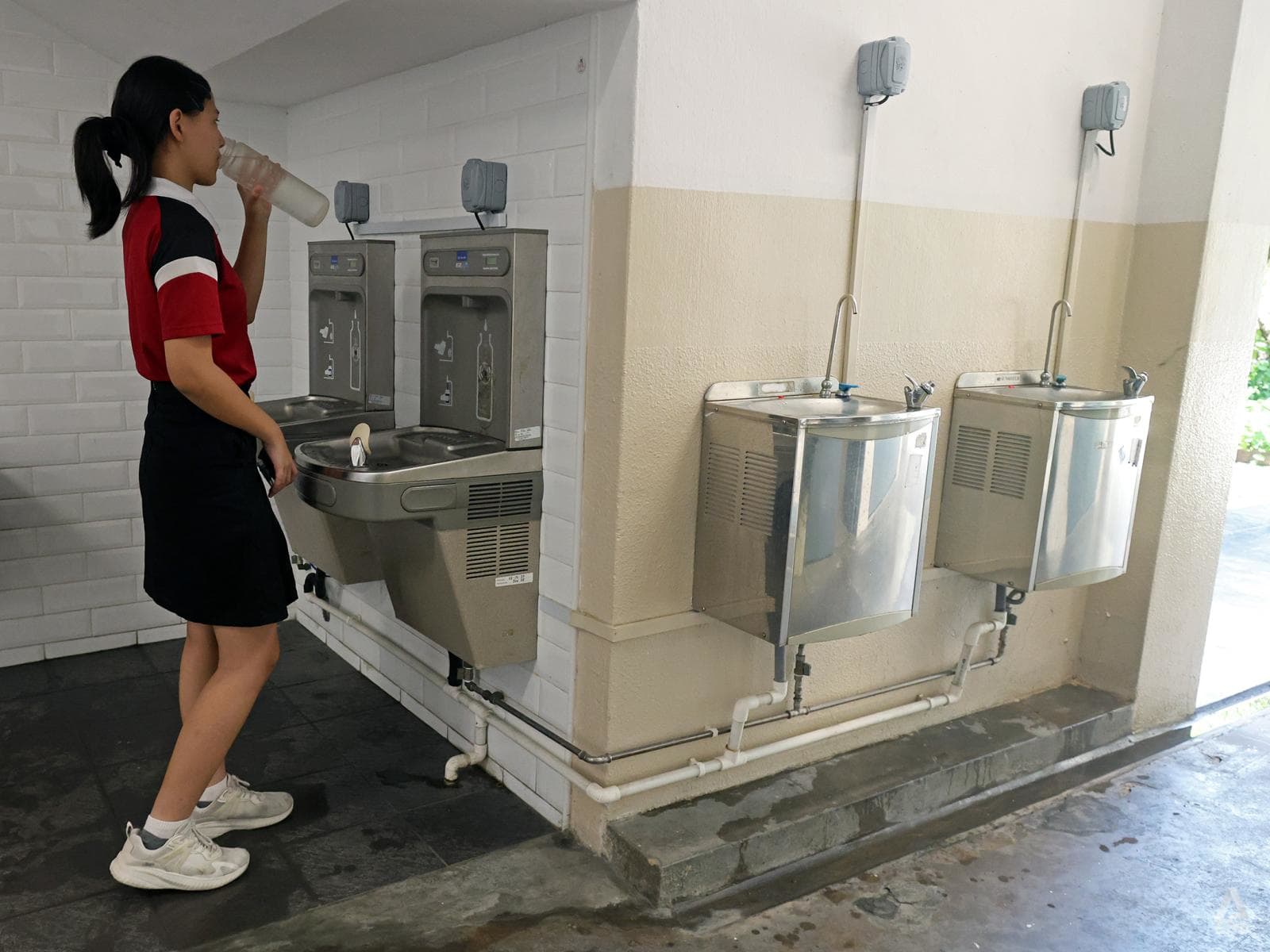
All the experts agreed that more education around climate change and sustainability among children is needed to help combat the root cause of rising temperatures.
Associate Professor Wan Man Pun from NTU’s School of Mechanical and Aerospace Engineering said that the school’s surroundings matter.
“When building a new school that will be naturally ventilated, selecting a location that is less subject to wind blockage by surrounding structures or away from highly dense built-up areas will be of great help.”
He also said that external architectural elements such as low emissivity glass for windows – a type of glass with a thin, transparent, microscopic coating that reflects heat – can manage heat gain in the building structure.
“These are some passive, non-energy-consuming measures (that) could be taken before involving active energy-consuming measures such as air-conditioning and mechanical ventilation.”
What about existing schools, where the buildings may be older?
Ms Elaine Tan from Arup said that incorporating green spaces such as green planters, roofs and walls can help absorb heat. Installing “blue infrastructure” such as water features may also help cool surrounding areas.
A study conducted by Arup found that there can be a 6.5°C difference between the most intense hotspot and the coolest spot near areas with greenery and water bodies.
However, she added that it is also important to ensure these new facilities can be easily maintained, among other things.
Assoc Prof Wan said that classrooms could reduce the density of heat by limiting the number of students and equipment that might emit heat in those spaces.
Even though parents who spoke to CNA TODAY immediately suggested that air-conditioning was the only solution should temperatures continue to rise and heatwaves become more frequent, they acknowledged that schools were already doing a lot to help students cope and there was not much else that could be done.
Some of them still had creative ideas to offer.
One parent said that misting fans may be installed in schools, while another suggested making uniforms more weather-resistant.
Mr Edwin Lee, the parent of two, said: “Even something more adaptive like zip-off pants that convert to shorts when it’s hot, or ones that can be removed quickly if they get wet during heavy rain or flood, could be useful."














